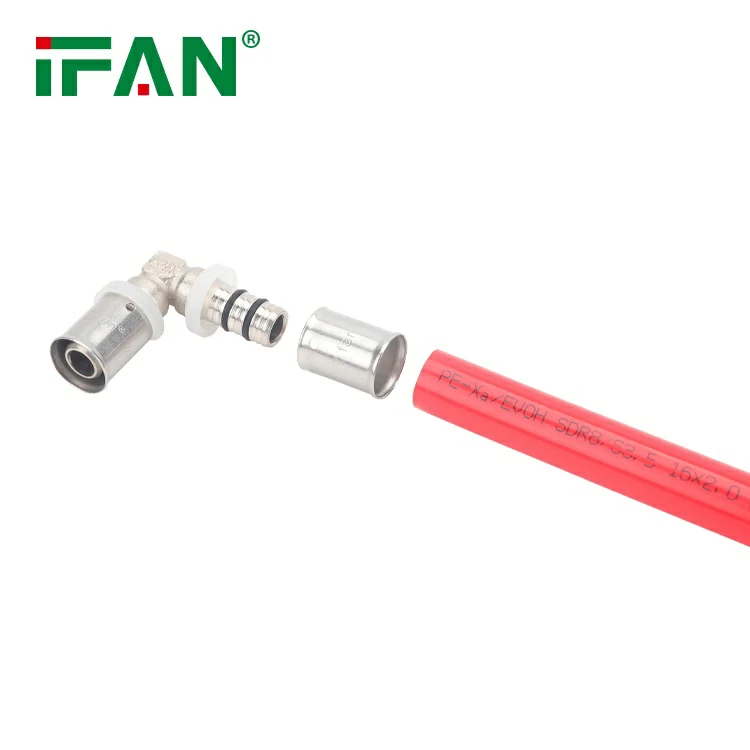As modern plumbing systems evolve, PEX (Cross-Linked Polyethylene) has become a popular material choice for residential, commercial, and industrial piping. Known for its flexibility, affordability, and ease of installation, PEX has earned a strong reputation as an alternative to traditional materials like copper or PVC.
But what exactly is PEX? What are its pros and cons? And when is it better to choose other materials like PPR or PVC?
In this article, we’ll take a deep dive into PEX piping—covering what it is, how it’s made, where it’s used, and when to consider alternative materials. If you’re a contractor, distributor, or project owner researching your options, this guide will help you make an informed decision.
🔍 What Is PEX?
PEX stands for Cross-Linked Polyethylene, a high-performance plastic material formed by cross-linking polymer chains to enhance strength and durability. It’s commonly used in:
- Hot and cold water plumbing
- Radiant floor heating systems
- Hydronic heating and cooling
- Re-piping and retrofitting
PEX pipes are available in three main types:
- PEX-A (most flexible, highest cost)
- PEX-B (balance of flexibility and affordability)
- PEX-C (cheapest, but less flexible)
✅ Advantages of PEX Pipes
1. High Flexibility
- Can be bent around corners without joints or elbows
- Ideal for fast installations with fewer fittings
2. Corrosion Resistance
- Unlike metal pipes, PEX does not corrode, scale, or develop pinholes
3. Thermal Performance
- Handles temperatures up to 95°C (203°F)
- Retains heat better than copper, making it energy efficient
4. Lower Installation Costs
- Reduced labor time and fewer fittings lower overall project costs
5. Quiet Operation
- Minimizes water hammer and vibration noise in plumbing systems
6. Freeze Resistance
- More flexible than rigid materials, allowing it to expand under freezing conditions without cracking

❌ Disadvantages of PEX Pipes
1. UV Sensitivity
- PEX degrades with prolonged exposure to sunlight
➡️ Not suitable for outdoor or exposed installations
2. Chemical Limitations
- Not compatible with some chemicals, oils, or direct fuel contact
➡️ May not be ideal for industrial or chemical applications
3. Permeability
- In some cases, oxygen and other gases can penetrate the pipe wall
➡️ This can affect certain heating systems without oxygen barriers
4. Not Recyclable in All Regions
- PEX is more difficult to recycle than other plastics like PPR or HDPE
5. Installation Requires Special Tools
- Crimp or clamp tools are needed for proper fitting connections
🏗️ Common Applications of PEX Piping
| Application Area | PEX Suitability |
|---|---|
| Residential Plumbing | ✅ Excellent |
| Radiant Floor Heating | ✅ Excellent |
| Commercial Buildings | ✅ Good |
| Outdoor Installations | ❌ Not Recommended |
| Chemical Transfer | ❌ Avoid |
| Hot/Cold Water Supply | ✅ Recommended |
🔄 PEX vs PPR: Which One to Choose?
While PEX offers flexibility, PPR (Polypropylene Random Copolymer) is often preferred in projects requiring:
- Higher pressure and temperature resistance
- Longer service life (50+ years)
- Welded, leak-proof joints
- Eco-friendly and recyclable material
At ifanpro.com, we specialize in PPR piping systems and custom manufacturing solutions for global clients. Many plumbing contractors and wholesalers choose PPR over PEX for:
- Public water supply systems
- Commercial heating networks
- Municipal infrastructure
If you’re working on large-scale or long-term projects, PPR may offer better ROI.
🌍 Global Sourcing Tip
PEX is widely used in North America and parts of Europe, but in Asia, the Middle East, and Latin America, PPR and PVC are more dominant due to:
- Lower material costs
- Availability of welding machines
- Long-term durability in high-heat environments
That’s why international buyers often work with Chinese manufacturers like ifanpro to source both PPR and PVC piping systems with custom sizes and packaging.
✅ Conclusion
PEX is a great option for flexible, fast-install plumbing and heating systems—especially in residential and light commercial projects. However, it’s not a one-size-fits-all solution.
For larger-scale or industrial systems, or if you need longer service life and high-pressure resistance, PPR might be the better choice.
Explore our full range of pipe and fitting solutions at ifanpro.com. As a professional Chinese factory, we offer:
- OEM/ODM support
- DIN and ISO-certified products
- Fast delivery and global logistics
- Competitive wholesale pricing













Commentaires récents